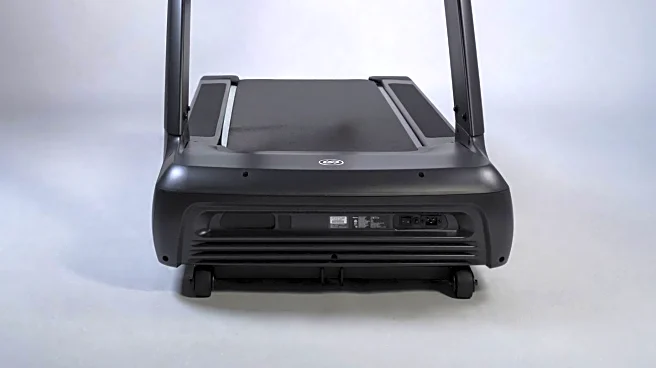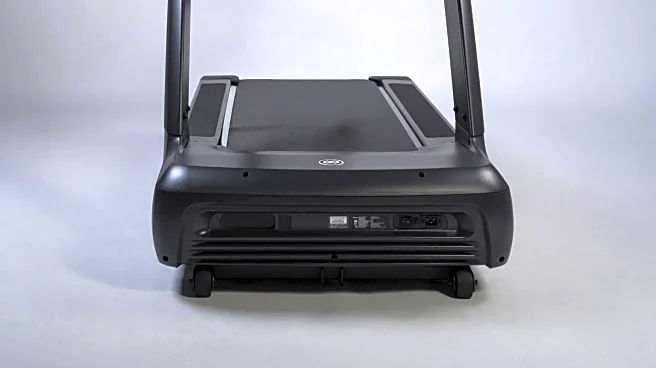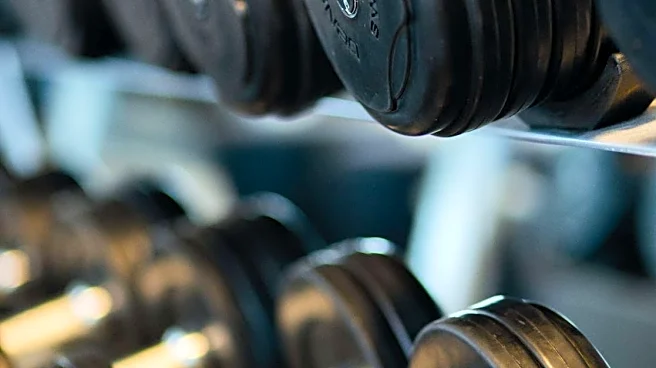What's Happening?
Curved treadmills are gaining popularity as a superior alternative to traditional motorized treadmills, offering unique benefits for runners. Unlike standard treadmills, curved treadmills are self-powered, requiring users to propel the belt with their own movement. This design encourages better running mechanics by promoting shorter, quicker steps and a mid-to-forefoot strike, which can reduce the risk of overuse injuries. The shock-absorbing surface of curved treadmills also provides a lower-impact workout, sparing joints from the pounding they would endure on harder surfaces like concrete. Additionally, users have instant control over their pace, making curved treadmills ideal for high-intensity interval training (HIIT) and sprint workouts. The increased effort required to drive the belt also engages the posterior chain and core muscles more intensely, contributing to improved strength and stability.
Why It's Important?
The introduction of curved treadmills represents a significant advancement in fitness technology, offering a more efficient and safer running experience. For fitness enthusiasts and athletes, the ability to improve running form and reduce injury risk is invaluable. The lower impact on joints makes curved treadmills an attractive option for those seeking intense cardiovascular workouts without the associated joint stress. This innovation could lead to broader adoption in gyms and training facilities, potentially influencing how running and cardio training are approached. As more people become aware of these benefits, the demand for curved treadmills may increase, impacting the fitness equipment market and encouraging further innovation in exercise technology.
What's Next?
As curved treadmills become more widely recognized for their benefits, fitness centers and gyms may begin to incorporate them into their equipment offerings. This could lead to a shift in how cardio workouts are structured, with more emphasis on form and injury prevention. Manufacturers may also explore further enhancements to the design and functionality of curved treadmills, potentially integrating digital features for tracking performance and progress. Additionally, fitness professionals might develop specialized training programs to maximize the benefits of curved treadmill workouts, further promoting their use among both amateur and professional athletes.
Beyond the Headlines
The rise of curved treadmills also highlights a broader trend towards personalized and adaptive fitness solutions. As individuals seek more tailored workout experiences, equipment that allows for greater control and customization is likely to gain traction. This shift could influence the development of other fitness technologies, encouraging a move away from one-size-fits-all solutions towards more individualized approaches. Furthermore, the focus on reducing injury risk and improving biomechanics aligns with a growing awareness of the importance of sustainable fitness practices, which prioritize long-term health and well-being over short-term gains.










